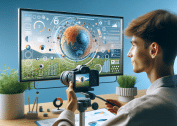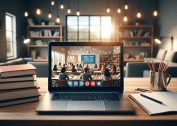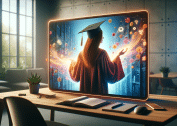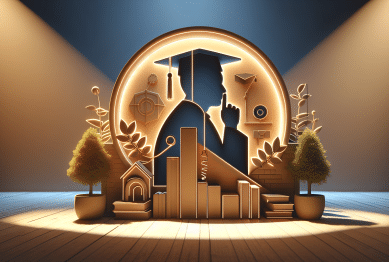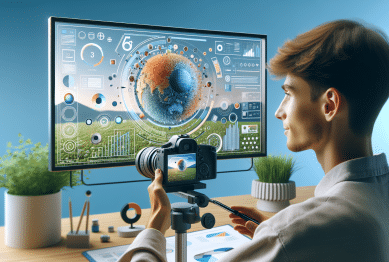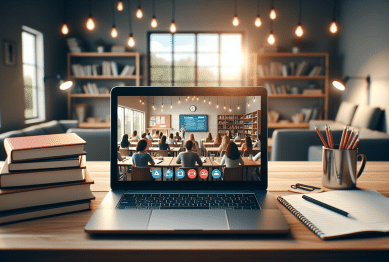Education has always been one of the most powerful forces shaping society. It prepares individuals for the workforce, strengthens communities, and drives innovation across industries. In 2025, however, the landscape of education is undergoing one of its most significant transformations in decades. The rise of personalized learning—an approach that adapts teaching to the individual needs, interests, and pace of students—is redefining what education means for modern society.
Unlike the traditional “one-size-fits-all” classroom model, personalized learning harnesses technology, data, and innovative teaching methods to ensure that each learner’s journey is unique. This shift is not just a trend; it reflects a deeper recognition that diverse learners require diverse approaches. The role of education in modern society is expanding beyond knowledge delivery—it is becoming about empowerment, adaptability, and lifelong learning.

Why the Role of Education in Modern Society Is Changing
The 20th century model of education—characterized by standardized testing, fixed curricula, and age-based groupings—was designed for industrial economies. But in the 21st century, automation, digitalization, and global interconnectedness demand different skills. Employers now prioritize adaptability, creativity, critical thinking, and emotional intelligence—competencies that traditional systems often overlook.
Key factors driving this change include:
- Technological disruption: The World Economic Forum predicts that by 2025, half of all employees will require reskilling due to automation and AI integration (World Economic Forum, 2020). Education must prepare students for jobs that don’t even exist yet.
- Global inequalities: UNESCO highlights that over 244 million children and youth worldwide are out of school, with marginalized groups most affected (UNESCO, 2023). Education systems must become more flexible and inclusive to address these gaps.
- Demand for lifelong learning: Modern careers no longer follow linear paths. Workers need ongoing education to remain relevant in fast-changing industries.
Against this backdrop, personalized learning is emerging as a solution capable of reshaping education’s societal role.
What Is Personalized Learning?
Personalized learning is an educational model where instruction, pace, and learning paths are tailored to the unique needs of each student. Instead of treating students as a homogenous group, it emphasizes individual differences in learning styles, interests, and abilities.
Some hallmarks of personalized learning include:
- Flexible pacing: Learners move ahead only when they’ve mastered a concept.
- Student choice: Students select projects or topics that resonate with their interests.
- Adaptive content: AI-powered platforms adjust lessons in real time based on student performance.
- Data-driven insights: Teachers use analytics to identify when learners need intervention or support.
This approach reflects the broader shift in the role of education in modern society—from mass instruction to individualized empowerment.
Technologies Driving Personalized Learning
Personalized learning is gaining traction largely because of emerging technologies that make it possible at scale. Several innovations stand out:
1. Artificial Intelligence (AI) Tutors
AI is becoming an educational assistant, capable of analyzing how students learn and providing tailored support. Tools such as Khan Academy’s AI tutor and Carnegie Learning’s AI-driven systems offer personalized hints, quizzes, and explanations that adapt in real time.
2. Adaptive Learning Platforms
Companies like DreamBox, Smart Sparrow, and Knewton provide adaptive platforms that adjust difficulty levels and suggest alternative explanations until mastery is achieved. These tools prevent students from either falling behind or coasting unchallenged.
3. Learning Analytics Dashboards
Educators now use analytics to monitor student progress more effectively. Dashboards highlight engagement levels, assignment completion, and performance trends, enabling teachers to offer targeted feedback rather than generic assessments.
4. Immersive Technologies (VR and AR)
Virtual reality (VR) and augmented reality (AR) allow students to learn by doing. Medical students can practice surgeries in a VR lab, while geography students can explore virtual landscapes. These experiences are tailored to learning needs, increasing engagement and retention.
The Role of Educators in a Personalized System
While technology is critical, the human role in education becomes even more important in a personalized system. Teachers are no longer simply transmitters of knowledge—they act as facilitators, mentors, and guides.
Educators’ responsibilities in this model include:
- Designing meaningful projects that connect learning with real-world applications.
- Interpreting analytics to understand where students need additional support.
- Fostering critical thinking and creativity, which machines cannot replicate.
- Providing emotional and social support, ensuring learners feel valued and motivated.
Thus, far from replacing teachers, personalized learning enhances their role and impact in modern society.
Benefits of Personalized Learning
Personalized learning is gaining momentum because of its transformative potential. Benefits include:
- Improved Engagement
Students are more motivated when they learn through topics that interest them, rather than standardized curricula. - Stronger Mastery of Skills
By progressing at their own pace, learners develop a deeper understanding of concepts before moving on. - Closing Equity Gaps
Marginalized learners, including those with disabilities or from underserved communities, benefit from resources tailored to their circumstances. - Support for Lifelong Learning
Personalized approaches extend beyond schools into workplaces, enabling professionals to reskill and upskill effectively.
Challenges in Implementing Personalized Learning
Despite its promise, personalized learning faces real challenges:
- The digital divide: Millions of students worldwide still lack reliable internet or devices, risking exclusion.
- Data privacy: Collecting sensitive student data raises questions about security and ethical use.
- Teacher readiness: Many educators require extensive training to leverage personalized platforms effectively.
- Scalability: Implementing personalized learning at national or global scale requires significant investment and infrastructure.
Unless addressed, these challenges could widen, rather than reduce, educational inequalities.
Global Examples of Personalized Learning
The shift toward personalization is visible worldwide:
- United States: The Summit Learning Program, backed by the Chan Zuckerberg Initiative, provides schools with adaptive platforms and mentoring structures.
- Finland: Known for progressive education, Finland allows students to blend subjects, project-based learning, and independent study.
- India: EdTech platforms like Byju’s and Vedantu deliver personalized lessons to millions of students, bridging gaps in rural and urban areas.
- Kenya: Eneza Education provides mobile-based personalized tutoring to underserved students, showing how low-cost technology can scale inclusivity.
These examples highlight that personalized learning is not just a Western phenomenon—it is becoming a global standard.
How Personalized Learning Shapes the Role of Education in Modern Society
Personalized learning redefines education’s function in three fundamental ways:
- As an equalizer
By catering to individual learning needs, education can reduce barriers related to socioeconomic status, geography, or ability. - As a workforce engine
Education no longer ends with graduation. Personalized learning supports continuous reskilling, preparing people for jobs of the future. - As a cultural driver
By encouraging creativity, problem-solving, and adaptability, education fosters citizens who can respond effectively to global challenges such as climate change or digital ethics.
In this way, the role of education in modern society is moving from knowledge transfer to empowerment for life.
Practical Steps for Schools and Institutions
For educators, policymakers, or organizations considering personalized learning, here are practical ways to implement it:
- Start with pilot programs: Test adaptive platforms in specific subjects before expanding.
- Blend digital and human support: Combine AI tutors with teacher guidance.
- Ensure teacher training: Provide ongoing professional development.
- Close digital divides: Supply devices or offline solutions for underserved students.
- Focus on holistic outcomes: Evaluate not just grades but also engagement, creativity, and problem-solving skills.
Conclusion
The role of education in modern society is being reshaped before our eyes. Personalized learning is more than a technological innovation—it is a cultural and social shift toward equity, adaptability, and lifelong growth. While challenges such as access, privacy, and training remain, the potential benefits are too significant to ignore.
In a world defined by constant change, education must move from a rigid system to one that adapts with its learners. Personalized learning offers exactly that. By embracing this approach, societies can build education systems that prepare not only students but also entire communities to thrive in the 21st century.
References
- Carnegie Learning. (2023). AI-driven learning solutions. Available at: https://www.carnegielearning.com (Accessed: 22 August 2025).
- DreamBox Learning. (2023). Adaptive math platform overview. Available at: https://www.dreambox.com (Accessed: 22 August 2025).
- Khan Academy. (2023). Khanmigo AI tutor. Available at: https://www.khanacademy.org (Accessed: 22 August 2025).



